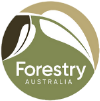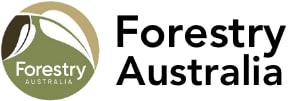
MEDIA RELEASE
Friday 9 February 2024
Call for the next generation of women and girls in science
Australia’s professional association for forest scientists, managers and growers is using this year’s International Day for Women and Girls in Science as a call for the next generation to join forestry science.
Forestry Australia President Dr Michelle Freeman said Sunday February 11 would mark the International Day of Women and Girls in Science.
“Forestry across Australia has so many tremendous women who are at the forefront of the science that underpins the skilful management of our forests and broader environment,” Dr Freeman said.
“On February 11 we celebrate all of these women, and we want to encourage the next generation of women and girls to follow in their footsteps too.
“If you ask someone to imagine a typical person who works in forest and fire management, they tend to picture a very narrow stereotype, but the reality is very different. We have incredible scientists across our country doing the most innovative and creative work for the betterment of our environment, community and economy – and that’s the definition of career goals.
“There’s so many opportunities for the next generation of women and girls to lead the science in our sector, promoting evidence-based decision making from carbon capture, forest fire management, conservation and renewables and to them I say: do it, you’ll love it.”
Some of the women from across Forestry Australia have shared their thoughts and experiences on this International Day for Women and Girls in Science:
Dr Tegan Brown, Victoria
“Vegetation is the fuel that burns in grassland and forest fires. In my current role as a Research Scientist for CFA, I use climate models and landscape data to predict future vegetation and fuel types. We will then use these data to predict future fire activity, and model the number and type of fire management resources that Victorian fire agencies will require. Data isn’t neutral, and is interpreted by scientists through a lens built from context and lived experiences. Having more diverse people contributing to and making decisions in land, forest, and fire management will enhance our organisations and our contribution to communities.”
To download a picture of Dr Tegan Brown, click HERE.
Molly Marshall, Tasmania
“I believe that now is the perfect opportunity for women to work within the forest, fire and land management sector. Every one of us has and will continue to have an integral role to play in the combat against climate change and our sector provides no better platform to be at the forefront of mitigation, adaptation and resilience.”
To download a picture of Molly Marshall, click HERE.
Emily Post, New South Wales
“Forestry science is a unique blend of natural, physical, and social sciences; it is a privilege to work in a science that can contribute so much to the wellbeing of people and the planet. Forests and their benefits are so diverse in nature, and I want to encourage the continued diversification of the community of stewards who are working to nurture our vital forest ecosystems.”
To download a picture of Emily Post, click HERE.
Dr Danielle Wiseman, Western Australia
“Working in forestry science is great as I get to collaborate with scientists across Australia and sometimes the world. An example of this is a recent success story for scientists and blue gum plantation growers. Sometime in the 1990s its thought that a damaging snout weevil (Gonipterus spp.) was introduced to Western Australia from eastern Australia. By the early 2000s plantation growers were starting to notice damage and branch death in the growing tips of trees in blue gum plantations. This damage made trees unprofitable. Initially, damage from the snout weevil was controlled using insecticides. However, using insecticides kills all insects, including beneficial insects. Another approach was developed where insecticide was applied to the roots where its absorbed by the trees. This method meant only insects feeding on the trees were affected by the insecticide. This worked well, but plantation growers would prefer not to use insecticides at all. A research collaboration was established between scientists from around Australia to find a solution. Dr Simon Lawson and Dr Helen Nahrung (USC) and Treena Burgess (Murdoch Univ.) decided to look for a natural enemy of the Snout weevil. The prime candidate was Anaphes nitens a type of fairy fly. The fairy fly lays its eggs in the eggs of the snout weevil. This is actually pretty gross as the Snout weevil lays its eggs in a blob of its own poo. The fairy flies larvae feed on the Snout weevils larvae so they don’t grow into adults. After many years of work by forest health scientists, last year we released a matched fairy fly into a plantation south of Rocky Gully to target the Snout weevils. We hope that it doesn’t find laying its eggs in Snout weevil poo as gross as we do and is able to stop the snout weevil from damaging the blue gum plantations.”
To download a picture of Dr Danielle Wiseman, click HERE.
ENDS
ABOUT FORESTRY AUSTRALIA
Forestry Australia is an independent professional association of more than 1,200 forest scientists, managers and growers who work in native forests, plantations and provision of environmental services. Its members are committed to the principles of sustainable forest management and applying these principles to generate environmental, social and economic outcomes in all types of forests and land tenures.
Media contact:
Danielle McKay
Danielle.mckay@fontpr.com.au
0438 390 273

